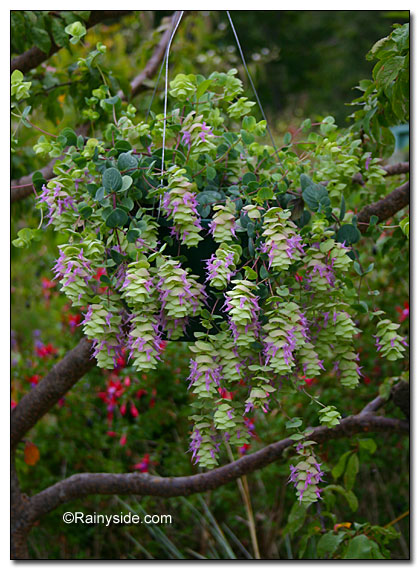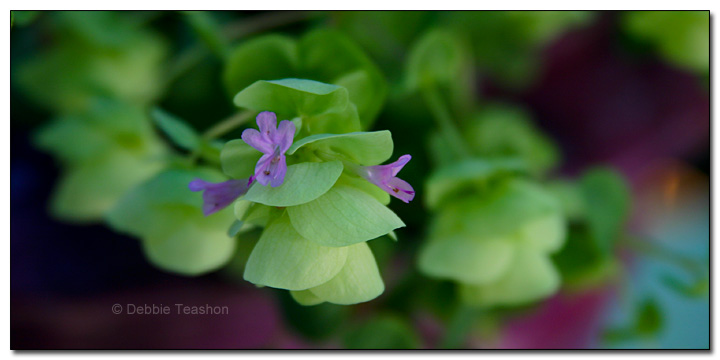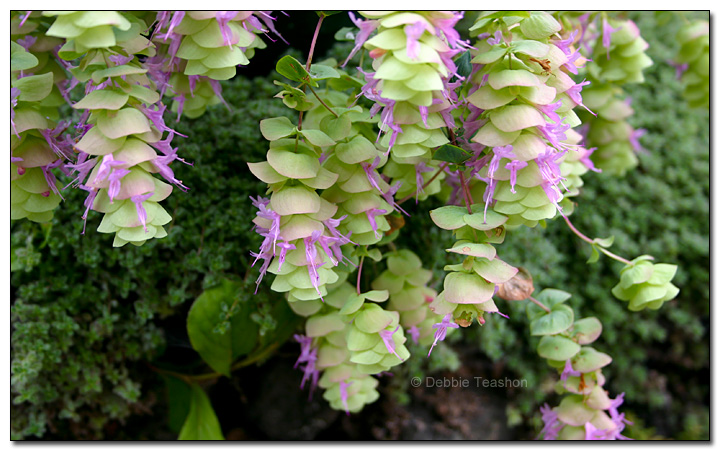Origanum rotundifolium 'Barbara Tingey'
ORNAMENTAL OREGANO
Family: Lamiaceae
Pronounced: o-ree-GAH-num ro-tun-dih-FOH-lee-um
Quick Jumps
Growing Guide
Rainy Side Notes
GROWING GUIDE

Origin:
Garden.
Plant Group:
Herbs.
Hardiness:
Sunset zones: 2b-24.
USDA zones: 7-9.
Heat zones: 9-7.
Mature size:
Height: 4 inches (10cm).
Width: 8 inches (20 cm).
Flowering period:
Summer to first frost.
Flowering attributes:
Two to three-inch long, hop-like bracts that start out a light green hue and gain a pink-tinge as it ages. Small pinkish-lavender flowers peek out between the bracts.
Leaf attributes:
Blue-green, slightly rounded heart-shaped leaves.
Growth habit:
Clump former.
Light:
Full sun.
Soil:
Extremely well-drained soil.
Feeding:
Fertilize in spring with a complete organic fertilizer.
Propagation Methods:
Divide in spring.
Basal cuttings in late spring.
Rainy Side Notes
A cross between Origanum rotundifolium and O. calcaratum, this oregano is not your typical kitchen herb; its flavor is weaker and more bitter than that of the culinary cultivars. What Origanum 'Barbara Tingey' lacks in flavor, she makes up for in the visual senses, waking you up to the exquisiteness of the ornamental oreganos. Heavy laden with showy bracts, the herb is at its best when draping down rock walls, containers, or hanging baskets.
My first plant came in a hanging basket. I hung it in a plum tree, where it guards the garden entrance. Later, I took cuttings and potted them up in a small, purple urn. The container gave the new chartreuse bracts pizzazz. As it aged, the bracts colored up in pinkish hues, and more small lavender flowers peeked out from between, also complemented by the purple container.
The herb is excellent when cut fresh for bouquets. Harvest the flowers in the morning and condition them in cool water. They will last approximately ten days in floral foam. For dried flower bouquets, cut before the bract turns brown.
Take cuttings of this oregano in spring. I took them in late summer, a less-than-ideal time for cuttings. Technically past their prime propagating time, the cuttings took root. The following summer, they sat in their pot, remaining small and barely growing. By the third year, the starts grew quickly and flowered profusely.


Photographed in author's garden.

Gardening for the Homebrewer: Grow and Process Plants for Making Beer, Wine, Gruit, Cider, Perry, and More
By co-authors Debbie Teashon (Rainy Side Gardeners) and Wendy Tweton
Copyright Notice | Home | Search | Herbs

